6 Best Shoes for Neuropathy in 2025: Podiatrist Recommended
Last Updated: January 01, 2025 | Author: Dr. John Anderson
More than 20 million Americans have some kind of neuropathy mainly caused by damage to peripheral nerves. Peripheral neuropathy causes numbness in the extremities including hands plus feet. For people suffering from neuropathy choosing the right footwear becomes essential.
It is highly recommended to choose shoes that support good foot health plus prevent injury. Wearing the right footwear is a crucial part of managing neuropathy plus it's not just about comfort. Choosing the right footwear for your condition involves considering various factors to find the best.
We have picked the best shoes for neuropathy that are comfortable and help prevent the pain. These shoes are carefully selected and specified for the purpose each serves best.
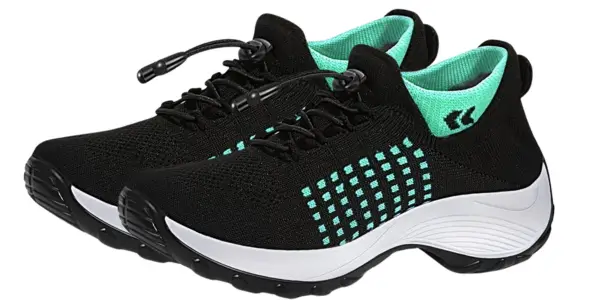
Table of Content:
- Orthofeet Orthopedic Gemini: Best Slip-On Shoes
- Skechers Max Cushioning Elite 2.0: Best for Comfort
- Hoka One One Clifton 9: Best for Diabetic Neuropathy
- Dr. Comfort William X: Best for Feet Protection
- New Balance Fresh Foam X 1080 V13: Best for Wide Feet
- Orthofeet Orthopedic Knit Kita: Best for Arch Support
- Conclusion
- Frequently Asked Questions
Orthofeet Orthopedic Gemini: Best Slip-On Shoes
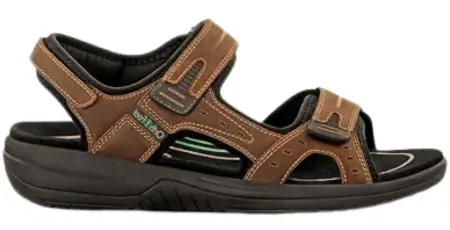
|
|
|---|---|
| Feature | Description |
| Sole Material | Rubber |
| Outer Material | Leather |
| Closure Type | Hook & Loop |
| Water Resistance Level | Not Water Resistant |
| Key Benefits | Supports conditions like plantar fasciitis, diabetes, and arthritis. Premium orthotic insole included. |
| Fit & Sizing | True to size, non-binding fit with a soft leather upper. |
| Price |
The open-toed slip-on sandals might seem an odd pick but they are good to serve you for neuropathy. They are as great for comfort as they look when you wear them. The neuropathy-friendly shoes have an orthotic insole along with a slip-resistant interior.
The orthotic insole of the shoe is combined with an arch support booster for better stability. Furthermore, the shoe has unmatched cushioning to support various foot conditions along with neuropathy symptoms.
The open sandals are a cool more breathable alternative to traditional caged shoes. The enclosed shoes mostly feel unbearable, especially in hot weather. You won't have issues with your feet sweating and are uncomfortable to wear for longer durations.
The sandals are made with soft leather covering the upper area and rubber in the outsole. The soft leather feels light also offering a non-binding fit. Furthermore, the shoes offer a two-way strap so you can easily put them on and take them off. The rubber outsole of the shoe provides better grip allowing more traction and stability.
Pros:- - Easy to put on and off.
- - Provides better stability.
- - Breathable.
- - High-quality material.
- - Cushioned sole.
- - Exposed feet may lead to injury.
Skechers Max Cushioning Elite 2.0: Best for Comfort
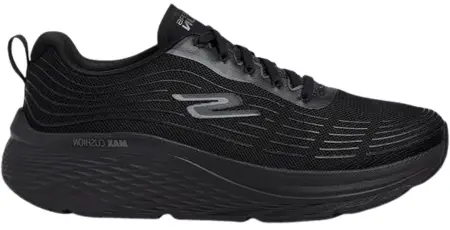
|
|
|---|---|
| Feature | Description |
| Sole Material | Ethylene Vinyl Acetate |
| Outer Material | Mesh |
| Model | Skechers Max Cushioning Elite 2.0 |
| Comfort and Support | Designed for exceptional comfort and support |
| Insole | Skechers Air-Cooled Goga Mat, breathable with high-rebound cushioning |
| Cushioning Platform | Lightweight, responsive ULTRA GO cushioning |
| Technology | NRT - Natural Rocker Technology for smooth heel-to-toe transition |
| Outsole | Flexible traction outsole |
| Price |
The shoe is true to its name with a high level of cushioning that is not only responsible for comfort but also for rebound. The extra lightweight foam is comfortable to wear for long hours without any trace of discomfort.
The shoe provides more comfort compared to any other shoe in the market. These shoes go easy on your joints and are also highly recommended for neuropathy.
Furthermore, the shoe has rocker technology aimed at reducing the stress on the heel and forefoot. It promotes more natural and balanced walking with smooth transitions.
It also has an accommodating toe box responsible for natural foot movement. You will feel it has a lot of room for wiggle despite the loaded cushioning. The underfoot padding is made more obvious in the shoe and is done for a purpose. You choose the shoe for running or walking, it will leave you worry-free of the impact that road exerts.
Pros:- - Excellent cushioning.
- - Roomy toe-box.
- - Good lockdown.
- - Comfy upper.
- - Budget-friendly.
- - No removable insole.
Hoka One One Clifton 9: Best for Diabetic Neuropathy
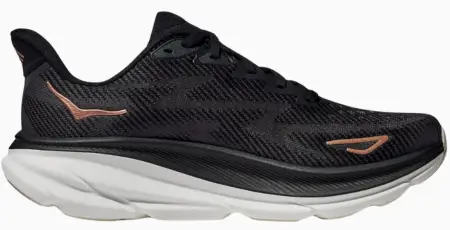
|
|
|---|---|
| Attribute | Description |
| Fabric Type | 100% Synthetic |
| Sole Material | Ethyl Vinyl Acetate |
| Outer Material | Synthetic Leather or Mesh |
| Closure Type | Lace-Up |
| Color | Black/Rose Gold |
| Material | Synthetic |
| Price |
Hoka has produced a number of shoes with a great emphasis on comfort. The Hoka Clifton 9 is no exception and is highly recommended for diabetic neuropathy. The shoe features everything that makes it an ideal choice for neuropathy from its lightweight construction to its rocker sole.
The molded EVA midsole of the shoe is remarkably soft and designed to provide greater comfort. The midsole is made more thicker than the previous version. The shoe feels soft and easy on your feet with a springy feel. It is also responsible for reduced pain and burning.
Hoka shoes are known for the broader platforms in the shoes that keep your feet stable. It is especially important for minimizing foot strain and improving stability.
The Clifton 9 is a classic sneaker that leaves you worry-free of the lace struggles. The shoe has a super lightweight construction and you won't get the clunkier feel that is associated with heavy shoes.
Pros:- - Thicker and more energetic midsole cushioning.
- - Easy on the knees.
- - Durable upper.
- - Greater impact absorption.
- - Best for easy days and long runs.
- - Not for wide feet.
Dr. Comfort William X: Best for Feet Protection

|
|
|---|---|
| Feature | Description |
| Fabric Type | 100% Leather |
| Care Instructions | Machine Wash |
| Sole Material | Rubber |
| Outer Material | Leather |
| Description | Men’s Double Depth Casual Shoe |
| Closure Type | Single hook and loop fastener for comfort and fit |
| Material Benefits | Leather uppers regulate heat, keeping feet cool and dry |
| Protection | Protective toe box provides extra protection from toe stubbing |
| Price |
For those looking for shoes for neuropathy that provide maximum protection, Dr. Comfort William X is the ultimate option. The fully closed shoe protects your feet from injuries with contact closure. Furthermore, the shoe is constructed with extra depth for extra support. The stability and support are further enhanced with hoop and loop fasteners.
The upper of the shoe works as a protective shield. It is made with natural leather which allows your feet to stay cool and dry. It's solid build and protective design comes with an accommodating toe box. It ensures you get a pain-free ride experience even with your neuropathic feet.
The shoe tilts towards the heavy side but with the protection and comfort it offers, it is worth the tradeoff. The shoe can be worn for work and is the perfect fit for formal situations.
Furthermore, the shoe is slip-resistant offering better protection of your feet.
Pros:- - Protective toe box.
- - Supportive insoles.
- - Double depth design.
- - Durable.
- - Heavier.
New Balance Fresh Foam X 1080 V13: Best for Wide Feet
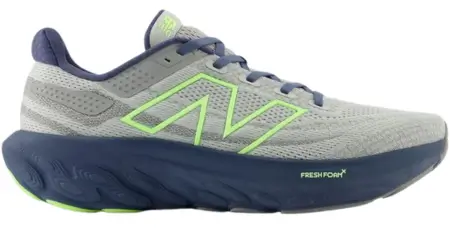
|
|
|---|---|
| Feature | Description |
| Sole Material | Rubber |
| Outer Material | Mesh |
| Midsole | Fresh Foam X with ~3% bio-based content for maximum cushioning. Bio-based content uses renewable resources. |
| Outsole Technology | NDurance rubber for superior durability in high-wear areas. |
| Upper Material | Engineered air mesh |
| Reflective Accents | Designed to catch the light |
| Heel-to-Toe Drop | 6 mm (approximate, due to variances in development and manufacturing processes) |
| Price |
New Balance offers the Fresh Foam X 1080 V 13 in 4 widths. It is our top pick for people with wide feet looking to pick shoes for neuropathy in the feet. The shoe is the plushiest in the 1080 lineup with engineered mesh that is quite thick and padded. The extra padding of the shoe does compromise on breathability but it is worth the bargain.
The tongue of the shoe is well padded reducing the strain of laces. Furthermore, the midsole is made with EVA foam with more compression. crucial for individuals with neuropathy who need to minimize foot pressure. The shoe has a wide toe box to better accommodate your feet also enhancing stability.
The shoe also provides a snug fit without running narrow. It provides a regular fit with a toe box on the roomier side making it an ideal choice for wide feet.
Pros:- - Exceptional comfort.
- - Plush cushioning.
- - Incredibly soft ride.
- - Long-lasting outsole.
- - Lightweight for its size.
- - Lacks stability.
Orthofeet Orthopedic Knit Kita: Best for Arch Support
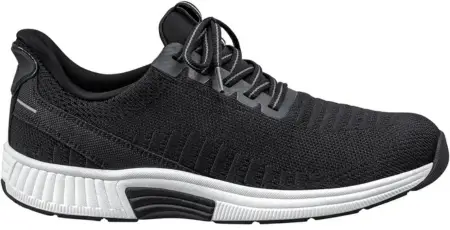
|
|
|---|---|
| Feature | Description |
| Sole Material | Rubber |
| Outer Material | Synthetic |
| Origin | China |
| Description | Orthopedic sneakers with slip-on design and anti-slip heel. |
| Benefits | Addresses over 20 conditions such as plantar fasciitis and arthritis. |
| Insole & Support | Premium orthotic insole and arch booster for comfort and support. |
| Fit & Sizing | True to size, wide toe-box, stretchable, water-repellent upper. |
| Price |
The Orthofeet Orthopedic Knit Kita is designed by podiatrists for neuropathy with great details added. The shoe is delightful to wear with serious cushioning that might not be obvious at a glance. But you will experience it when you wear it.
The orthotic insole is combined with greater arch support that works to reduce impact. The best part about the shoe is the multiple layering of cushioning that work together to relieve pain. The slip-on shoes can be worn for long periods without any discomfort.
Furthermore, the shoe has an accommodating toe box allowing wiggling space. They are easy to wear with a hands-free slip-on design making it an ideal choice for people with mobility issues.
The shoe is also responsible for greater shock absorption thanks to its ergonomic sole. The upper of the shoe offers a pressure-free fit without overlays that restrict foot movement. It is made with water-repellent stretchy fabric for better protection. Furthermore, the outsole of the shoe is made more grippy allowing greater traction.
Pros:- - Anatomical arch support.
- - Pressure free fit.
- - Free foot movement.
- - Water repellent upper.
- - Greater shock absorption.
- - Expensive.
Conclusion
Choosing the best shoes for neuropathy is a crucial decision that can greatly affect your foot health. When selecting shoes it is important to look for features including exceptional cushioning plus ample toe room. Also pay attention to supportive insoles that serve to minimize the discomfort of neuropathy.
The ideal pair will also provide sturdy support to ensure stability to protect your feet from further injury. We have carefully evaluated the factors on the shoes to provide a comprehensive list of the best shoes for neuropathy. Each shoe has gone through testing to better help you choose the right one.
Frequently Asked Questions
1. How can adjustable shoes help with neuropathy?
Adjustable shoes are crucial for individuals with neuropathy because they accommodate swollen feet. Shoes with a good lacing system or available in multiple widths allow for better-fit customization. These prevent rubbing plus exacerbating neuropathy symptoms such as numbness.
2. How should I evaluate a shoe for neuropathy needs?
When finding the right shoe for neuropathy, evaluate for features like adequate cushioning that absorbs shock plus a comfortable shoe fit that accommodates swollen feet along with adjustable features such as a versatile lacing system. Ensure the shoe has a high acceptance from podiatric standards like the APMA to guarantee it supports plus doesn’t exacerbate neuropathy.
3. Can the right shoes really help manage neuropathy symptoms?
Yes, wearing the right shoes can significantly help manage the symptoms of neuropathy by reducing foot pain plus discomfort. Proper footwear helps to alleviate pressure points plus reduce irritation which can prevent further nerve damage and enhance mobility.
4. How often should I replace my shoes to best support neuropathy?
It's recommended to replace your shoes every 6 to 12 months, depending on how often you wear them. Frequent inspections for worn-out soles plus stretched-out uppers are important, as these factors can affect the support your shoes provide.
Share this:







